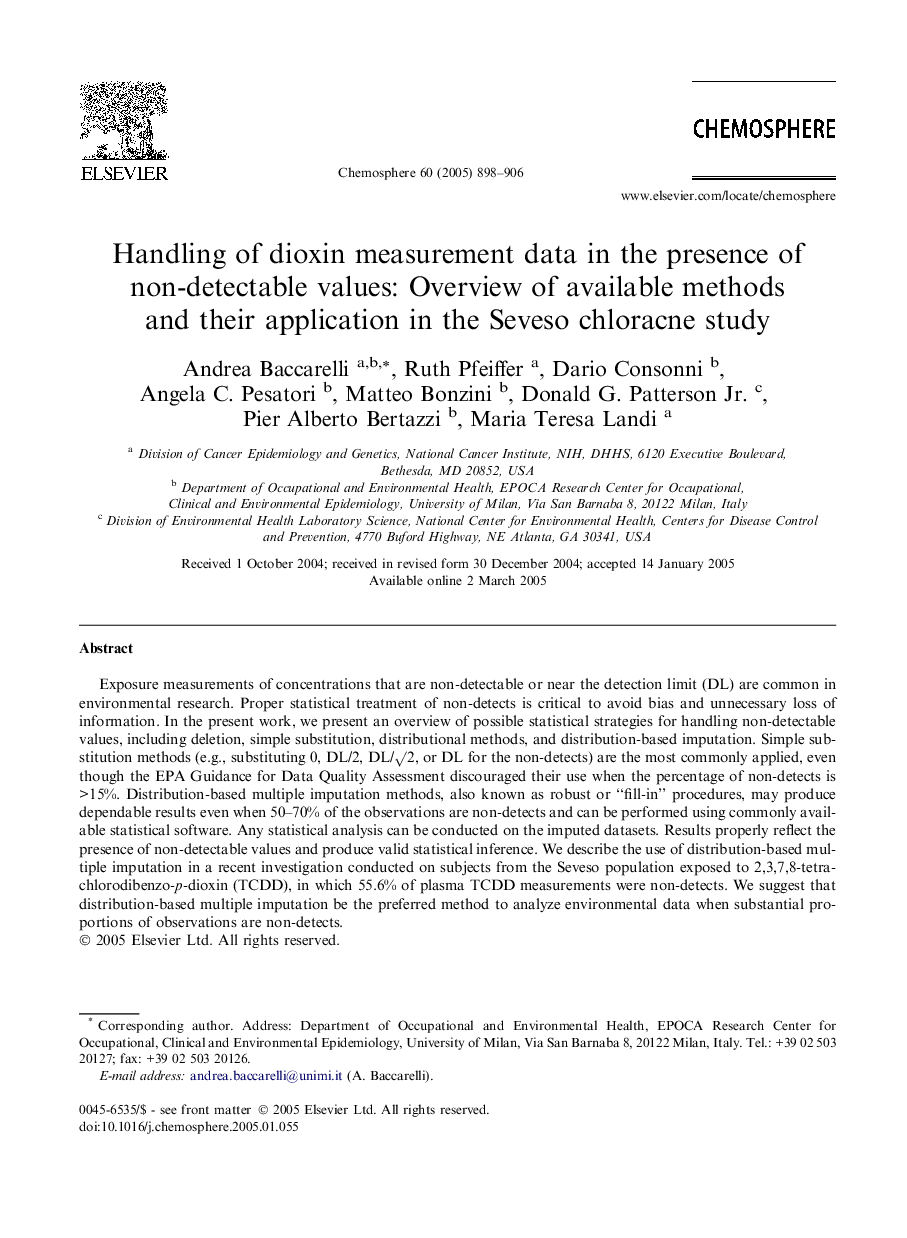| Article ID | Journal | Published Year | Pages | File Type |
|---|---|---|---|---|
| 9451253 | Chemosphere | 2005 | 9 Pages |
Abstract
Exposure measurements of concentrations that are non-detectable or near the detection limit (DL) are common in environmental research. Proper statistical treatment of non-detects is critical to avoid bias and unnecessary loss of information. In the present work, we present an overview of possible statistical strategies for handling non-detectable values, including deletion, simple substitution, distributional methods, and distribution-based imputation. Simple substitution methods (e.g., substituting 0, DL/2, DL/â2, or DL for the non-detects) are the most commonly applied, even though the EPA Guidance for Data Quality Assessment discouraged their use when the percentage of non-detects is >15%. Distribution-based multiple imputation methods, also known as robust or “fill-in” procedures, may produce dependable results even when 50-70% of the observations are non-detects and can be performed using commonly available statistical software. Any statistical analysis can be conducted on the imputed datasets. Results properly reflect the presence of non-detectable values and produce valid statistical inference. We describe the use of distribution-based multiple imputation in a recent investigation conducted on subjects from the Seveso population exposed to 2,3,7,8-tetrachlorodibenzo-p-dioxin (TCDD), in which 55.6% of plasma TCDD measurements were non-detects. We suggest that distribution-based multiple imputation be the preferred method to analyze environmental data when substantial proportions of observations are non-detects.
Keywords
Related Topics
Life Sciences
Environmental Science
Environmental Chemistry
Authors
Andrea Baccarelli, Ruth Pfeiffer, Dario Consonni, Angela C. Pesatori, Matteo Bonzini, Donald G. Jr., Pier Alberto Bertazzi, Maria Teresa Landi,
